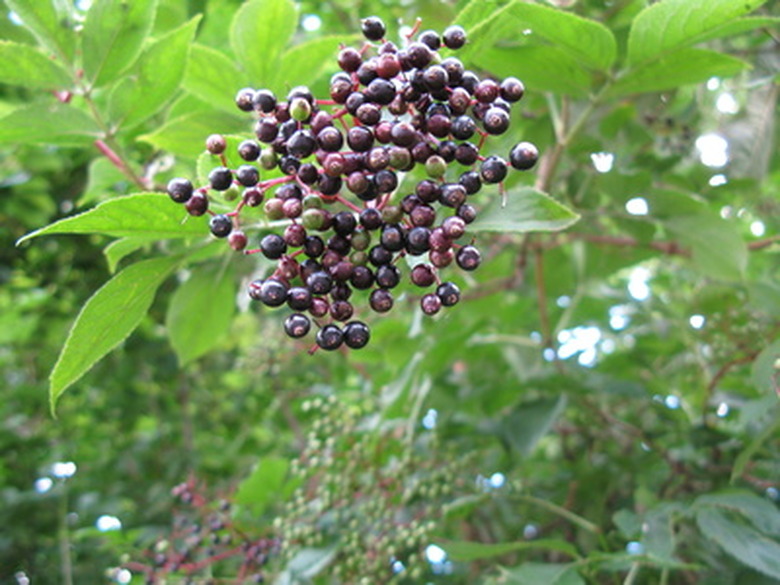Diseases Of The Elderberry
The elderberry plant is a large shrub or tree that is native to North America. The tree is known for the production of small vitamin-rich berries that are used in jams, jellies and desserts. Elderberry trees grow best when planted in a well-draining, nutrient-rich soil in an open area that has proper air circulation. These growing conditions will keep the tree healthy and prevent the introduction of disease.
Tomato Ringspot Virus
According to the Ontario Ministry of Agriculture, tomato ringspot virus is the most serious disease that affects elderberry trees. The viral disease weakens the plant, which results in a decrease of fruit production and eventually the death of the tree. Tomato ringspot is spread by roundworms in the soil and through the transfer of pollen. Prevention of the virus involves testing the soil for the presence of roundworms prior to planting elderberry trees and eliminating wild-growing elderberry trees in a 100-foot radius, as they can carry the disease. Eliminate roundworms by fumigating the soil prior to planting new trees.
- The elderberry plant is a large shrub or tree that is native to North America.
- Prevention of the virus involves testing the soil for the presence of roundworms prior to planting elderberry trees and eliminating wild-growing elderberry trees in a 100-foot radius, as they can carry the disease.
Twig Canker
Twig canker is a fungal disease that creates a canker girdle on the stem of the tree and causes tree growth above the canker to die. An elderberry tree becomes infected with the fungus when stressful conditions such as injury, flooding or drought cause the tree to weaken in health. Elimination of a twig canker infection involves pruning to remove diseased stems and branches. Oklahoma State University Extension Service recommends that pruned branches be disposed of by burning or placing them in the garbage to prevent the spread to other plants. Disinfect the pruning tools with a solution of nine parts water and one part bleach after removing diseased branches.
Powdery Mildew
Powdery mildew is a fungus that infects the leaves, canes and berries of the elderberry plant in late summer through early fall. The berries of an infected plant will be gray in color from the presence of the powdery fungus. Oklahoma State University Extension Service lists powdery mildew as not a serious problem to the tree; however, infected leaves should be removed and destroyed in the fall season to prevent the pathogen from wintering over in the soil below the tree.
- Twig canker is a fungal disease that creates a canker girdle on the stem of the tree and causes tree growth above the canker to die.
- Oklahoma State University Extension Service lists powdery mildew as not a serious problem to the tree; however, infected leaves should be removed and destroyed in the fall season to prevent the pathogen from wintering over in the soil below the tree.
Verticillium Wilt
Verticillium wilt is a soil-borne fungus that attacks the wood of the elderberry tree. The fungus enters the tree through the root system and travels through the vascular system. Symptoms of a verticillium infection develop in late summer but become more severe once the temperatures cool in the fall season. An infected tree will have yellowing foliage, slowed growth, large seed production and death of branches. It is common for one section of the tree to become infected instead of the entire tree. Increase the health of the tree by providing adequate water and fertilizer to assist the tree in recovering from the infection and prevent further spread, as there is no chemical treatment to cure the tree. Bramble Lane Farms recommends not planting trees in a soil area planted previously with a verticillium wilt-susceptible plant.
- Verticillium wilt is a soil-borne fungus that attacks the wood of the elderberry tree.
- Increase the health of the tree by providing adequate water and fertilizer to assist the tree in recovering from the infection and prevent further spread, as there is no chemical treatment to cure the tree.
